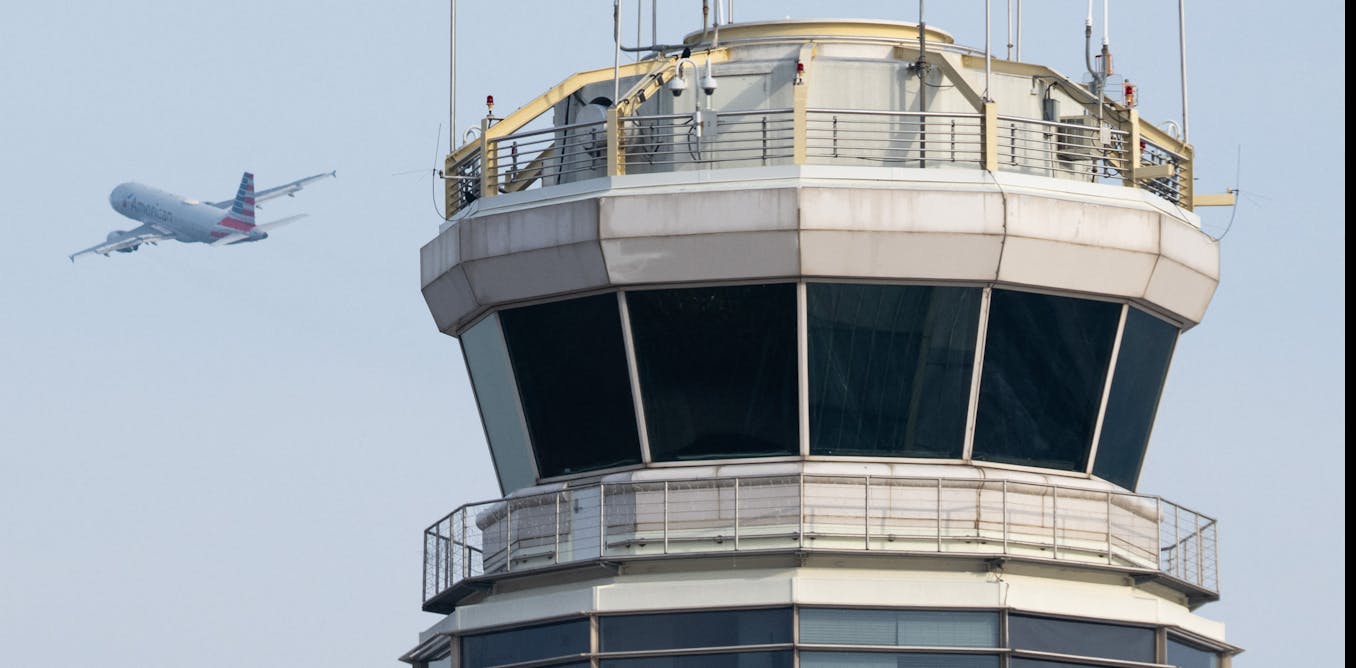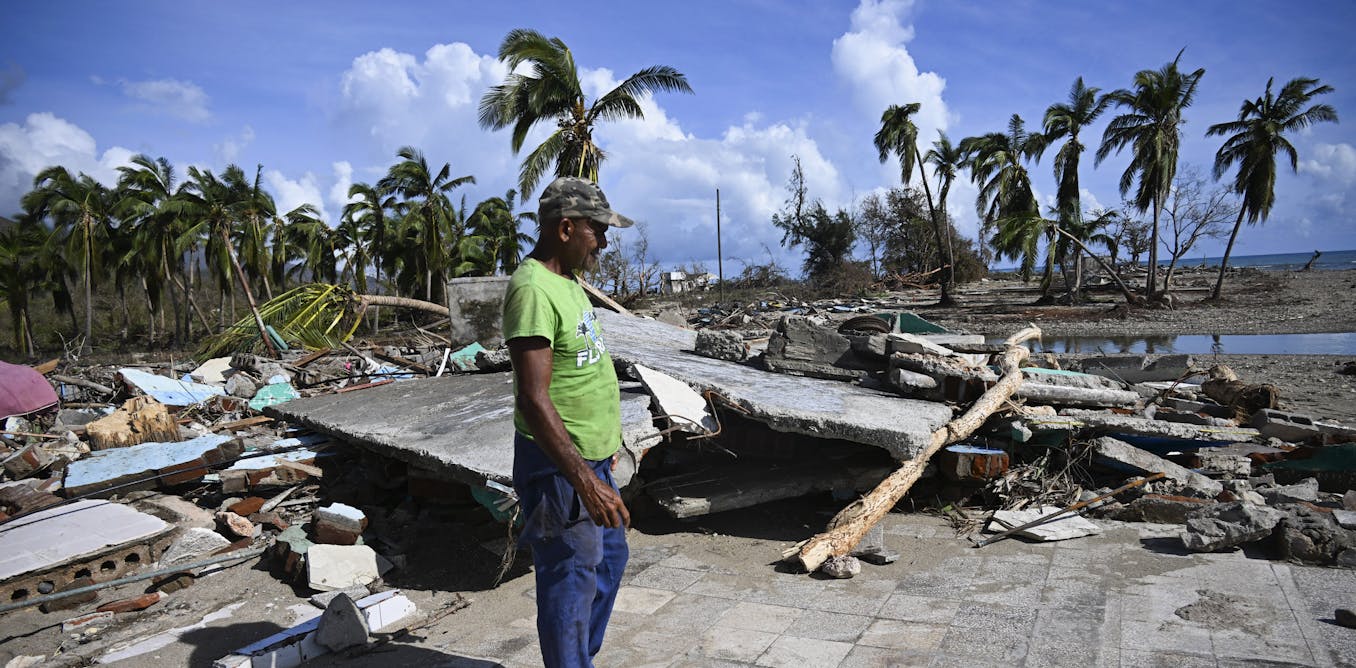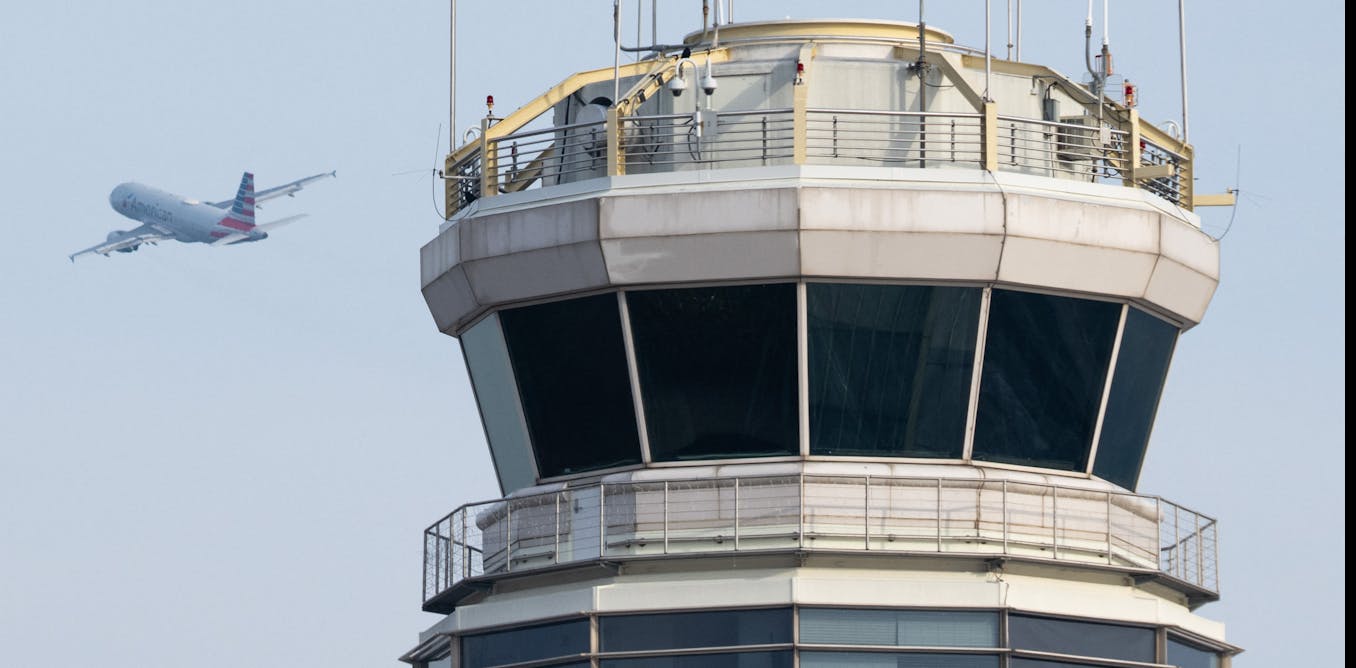After hours of routine operations, an air traffic controller gets a radio call from a small aircraft whose cockpit indicators can’t confirm that the plane’s landing gear is extended for landing. The controller arranges for the pilot to fly low by the tower so the controller can visually check the plane’s landing gear. All appears well. “It looks like your gear is down,” the controller tells the pilot.
The controller calls for the airport fire trucks to be ready just in case, and the aircraft circles back to land safely. Scenarios like this play out regularly. In the air traffic control system, everything must meet the highest levels of safety, but not everything goes according to plan.
Contrast this with the still science-fiction vision of future artificial intelligence “pilots” flying autonomous aircraft, complete with an autonomous air traffic control system handling aircraft as easily as routers shuttling data packets on the internet.
I’m an aerospace engineer who led a National Academies study ordered by Congress about air traffic controller staffing. Researchers are continually working on new technologies that automate elements of the air traffic control system, but technology can execute only those functions that are planned for during its design and so can’t modify standard procedures. As the scenario above illustrates, humans are likely to remain a necessary central component of air traffic control for a long time to come.
What air traffic controllers do
The Federal Aviation Administration’s fundamental guidance for the responsibility of air traffic controllers states: “The primary purpose of the air traffic control system is to prevent a collision involving aircraft.” Air traffic controllers are also charged with providing “a safe, orderly and expeditious flow of air traffic” and other services supporting safety, such as helping pilots avoid mountains and other hazardous terrain and hazardous weather, to the extent they can.
Air traffic controllers’ jobs vary. Tower controllers provide the local control that clears aircraft to take off and land, making sure that they are spaced safely apart. They also provide ground control, directing aircraft to taxi and notifying pilots of flight plans and potential safety concerns on that day before flight. Tower controllers are aided by some displays but mostly look outside from the towers and talk with pilots via radio. At larger airports staffed by FAA controllers, surface surveillance displays show controllers the aircraft and other vehicles on the ground on the airfield.
https://www.youtube.com/watch?v=ho4r3N559M4
Approach and en route controllers, on the other hand, sit in front of large displays in dark and quiet rooms. They communicate with pilots via radio. Their displays show aircraft locations on a map view with key features of the airspace boundaries and routes.
The 21 en route control centers in the U.S. manage traffic that is between and above airports and thus typically flying at higher speeds and altitudes.
Controllers at approach control facilities transition departing aircraft from local control after takeoff up and into en route airspace. They similarly take arriving aircraft from en route airspace, line them up with the landing approach and hand them off to tower controllers.
A controller at each display manages all the traffic within a sector. Sectors can vary in size from a few cubic miles, focused on sequencing aircraft landing at a busy airport, to en route sectors spanning more than 30,000 cubic miles (125,045 cubic km) where and when there are few aircraft flying. If a sector gets busy, a second and even third controller might assist, or the sector might be split into two, with another display and controller team managing the second.
How technology can help
Air traffic controllers have a stressful job and are subject to fatigue and information overload. Public concern about a growing number of close calls have put a spotlight on aging technology and staffing shortages that have led to air traffic controllers working mandatory overtime. New technologies can help alleviate those issues.
The air traffic control system is incorporating new technologies in several ways. The FAA’s NextGen air transportation system initiative is providing controllers with more – and more accurate – information.
Controllers’ displays originally showed only radar tracking. They now can tap into all the data known about each flight within the en route automation modernization system. This system integrates radar, automatic position reports from aircraft via automatic dependent surveillance-broadcast, weather reports, flight plans and flight histories.
Systems help alert controllers to potential conflicts between aircraft, or aircraft that are too close to high ground or structures, and provide suggestions to controllers to sequence aircraft into smooth traffic flows. In testimony to the U.S. Senate on Nov. 9, 2023, about airport safety, FAA Chief Operating Officer Timothy Arel said that the administration is developing or improving several air traffic control systems.
Researchers are using machine learning to analyze and predict aspects of air traffic and air traffic control, including air traffic flow between cities and air traffic controller behavior.
How technology can complicate matters
New technology can also cause profound changes to air traffic control in the form of new types of aircraft. For example, current regulations mostly limit uncrewed aircraft to fly lower than 400 feet (122 meters) above ground and away from airports. These are drones used by first responders, news organizations, surveyors, delivery services and hobbyists.
However, some emerging uncrewed aircraft companies are proposing to fly in controlled airspace. Some plan to have their aircraft fly regular flight routes and interact normally with air traffic controllers via voice radio. These include Reliable Robotics and Xwing, which are separately working to automate the Cessna Caravan, a small cargo airplane.
Others are targeting new business models, such as advanced air mobility, the concept of small, highly automated electric aircraft – electric air taxis, for example. These would require dramatically different routes and procedures for handling air traffic.
Expect the unexpected
An air traffic controller’s routine can be disrupted by an aircraft that requires special handling. This could range from an emergency to priority handling of medical flights or Air Force One. Controllers are given the responsibility and the flexibility to adapt how they manage their airspace.
The requirements for the front line of air traffic control are a poor match for AI’s capabilities. People expect air traffic to continue to be the safest complex, high-technology system ever. It achieves this standard by adhering to procedures when practical, which is something AI can do, and by adapting and exercising good judgment whenever something unplanned occurs or a new operation is implemented – a notable weakness of today’s AI.
Indeed, it is when conditions are the worst – when controllers figure out how to handle aircraft with severe problems, airport crises or widespread airspace closures due to security concerns or infrastructure failures – that controllers’ contributions to safety are the greatest.
Also, controllers don’t fly the aircraft. They communicate and interact with others to guide the aircraft, and so their responsibility is fundamentally to serve as part of a team – another notable weakness of AI.
As an engineer and designer, I’m most excited about the potential for AI to analyze the big data records of past air traffic operations in pursuit of, for example, more efficient routes of flight. However, as a pilot, I’m glad to hear a controller’s calm voice on the radio helping me land quickly and safely should I have a problem.

The post “Why AI can’t replace air traffic controllers” by Amy Pritchett, Professor of Aerospace Engineering, Penn State was published on 01/30/2024 by theconversation.com


































